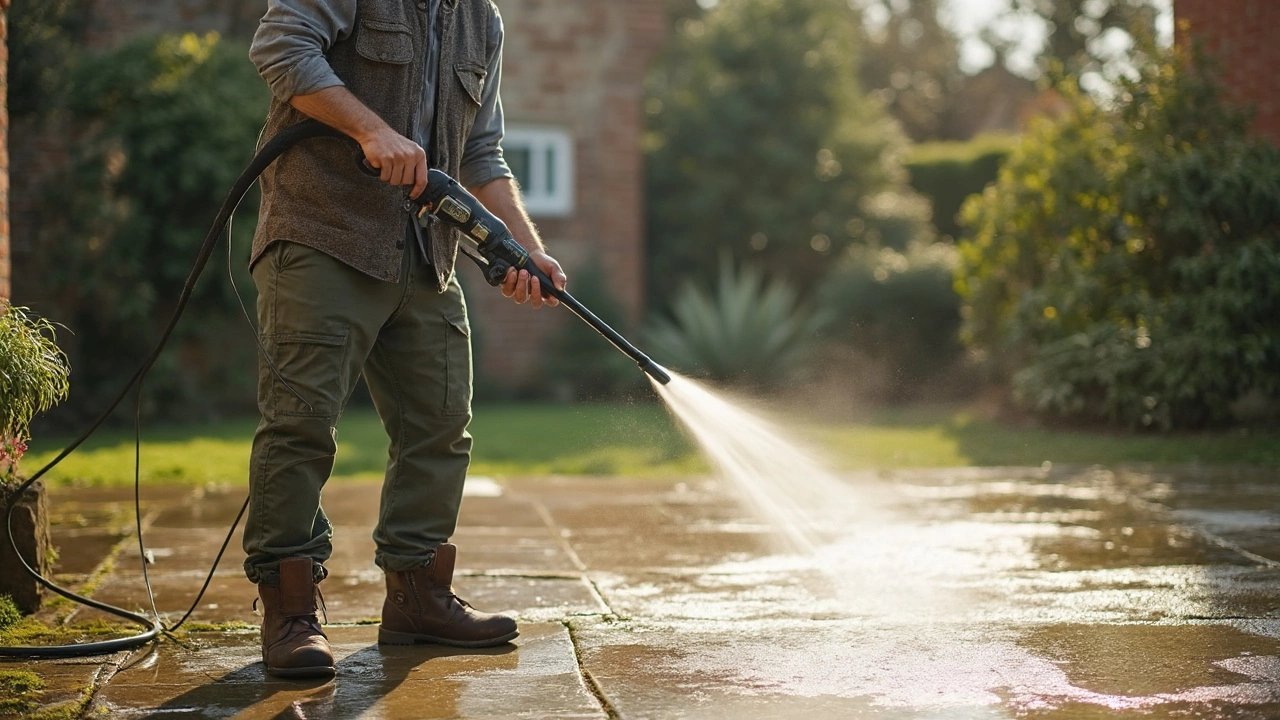Power Washer Tips: Get the Best Results Fast
If you’ve ever tried to wash a house with a garden hose and ended up with streaks, you know how satisfying a power washer can be. The trick is using the right settings, the right nozzle, and a little common sense. Below you’ll find step‑by‑step advice that lets you tackle siding, decks, driveways, and even stubborn mold without damaging anything.
Preparing Your Power Washer
First things first – safety. Slip‑proof shoes, eye protection, and hearing guards are a must. Even if the machine sounds loud, the noise can damage your ears over time. Next, give the washer a quick visual check. Look for cracked hoses, loose fittings, and a clean filter. A clogged filter reduces pressure and can overheat the pump.
Once you’re sure the unit is in good shape, connect it to a water source that can supply at least 2.5 gallons per minute. Low flow means low pressure, which defeats the purpose. Now pick a nozzle. The numbers on the tip tell you the spray angle: 0° is a pinpoint jet for stubborn stains, 15° for paint stripping, 25° for general cleaning, and 40° for rinsing. Start with the widest angle and work down – you’ll avoid gouging wood or stripping paint.
Adjust the pressure according to the surface. Vinyl siding can handle 1,500 psi, while a wooden deck should stay below 1,200 psi. Too much pressure on soft surfaces can cause splintering or etching. Test a small, hidden area before you go full‑scale.
Cleaning Strategies & Common Mistakes
Before you spray, pre‑wet the area with a garden hose. This helps the detergent (if you’re using one) work its magic and reduces the chance of streaks. Apply a biodegradable cleaner to tough grime, let it sit for a minute, then rinse with the power washer on a 25° nozzle. For mold on exterior walls, a 15° tip with a low‑psi setting works well – the force breaks the spores loose without blasting the paint.
Timing matters. A typical two‑story house takes about 45‑60 minutes to wash, depending on size and how dirty it is. Break the job into zones – start at the top and work down so the runoff doesn’t re‑soil cleaned areas. Keep the wand moving; staying in one spot for more than three seconds can strip paint.
Common pitfalls include using too hot water on delicate surfaces, standing too close to the spray, and neglecting to rinse after using chemicals. Always follow the cleaner’s label for dilution ratios – more isn’t always better. When you’re done, release any remaining pressure by pulling the trigger, then turn off the water before shutting off the machine. This protects the pump and prolongs the life of your washer.
Whether you’re preparing a home for sale, clearing away post‑construction dust, or just keeping the driveway spotless, these power washer tips will save you time, money, and headaches. Remember: start low, test first, and move the wand constantly. With a bit of practice, you’ll get professional‑level results without hiring a crew.

Will 2000 PSI Clean Concrete? Real Answers About Pressure Washing Power
Curious if a 2000 PSI pressure washer will get your concrete looking like new? This article digs into what 2000 PSI can and can’t do, breaking down how it handles stains, grime, and even mold. You’ll get tips from real experiences, not just theory. We’ll talk about safety, smart techniques, and when you might need to go stronger. If you want your driveway or patio to shine again, this guide brings the facts.
Read More